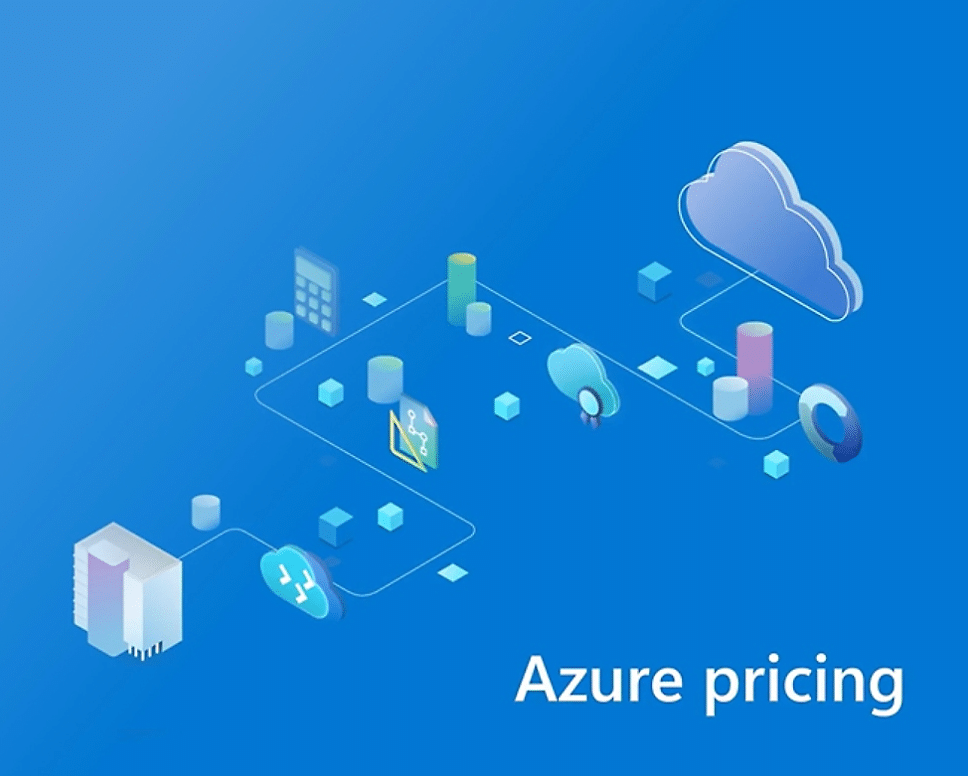Cloud Server Pricing – The cloud computing revolution has transformed how businesses, developers, and even individuals host applications, store data, and scale their operations. At the heart of this revolution are cloud servers—virtual machines hosted in powerful data centers, accessible from anywhere in the world.
While the benefits of cloud servers are widely understood—flexibility, scalability, high availability—pricing often remains a complex and confusing aspect. From hourly billing models to hidden costs in data transfer and storage, understanding cloud server pricing is essential to avoid surprises and ensure you’re getting the most value for your investment.
In this article, we’ll demystify cloud server pricing by breaking down the key components, comparing top providers, exploring pricing strategies, and offering tips to manage your cloud costs efficiently.

What Is a Cloud Server?
Before diving into costs, it’s essential to understand what a cloud server actually is. A cloud server is a virtualized server that runs on a cloud infrastructure. It functions much like a physical server but is delivered remotely via the internet.
You can configure it with specific amounts of CPU, RAM, storage, and bandwidth. You can also choose the operating system, install applications, and run services just like on a traditional server. The key difference? You don’t have to manage the hardware, and you pay only for what you use.
Core Components of Cloud Server Pricing
Cloud server pricing is composed of multiple cost elements. Understanding each will help you make informed decisions.
1. Compute Resources (CPU and RAM)
This is the primary component of pricing. You pay based on the virtual CPU cores and the amount of RAM allocated to your server.
-
Example: A 2 vCPU server with 4 GB RAM might cost around $10–20/month.
-
Some providers allow you to customize configurations; others offer predefined instance types (e.g., AWS EC2 t3.micro, DigitalOcean Droplet, etc.).
2. Storage
There are typically two types of storage:
-
Block Storage (e.g., SSD or HDD attached storage): Used for OS and application data.
-
Object Storage (e.g., Amazon S3, DigitalOcean Spaces): Ideal for static files, backups, and media.
Storage is usually billed per gigabyte (GB) per month.
-
Example: $0.10/GB/month for SSD block storage.
3. Bandwidth / Data Transfer
Cloud providers usually offer some amount of outbound data transfer for free. After that, they charge per GB transferred.
-
Inbound traffic (uploads) is often free.
-
Example: $0.09/GB after 1 TB usage in DigitalOcean.
4. IP Address
Some providers charge for additional IPs or for reserving static IP addresses.
5. Operating System and Licensing
Linux servers are usually free to license, but Windows or enterprise software (SQL Server, RHEL, etc.) may carry licensing fees.
-
Example: Windows Server license may add $10–20/month.
6. Additional Services
Managed databases, firewalls, load balancers, monitoring tools, and backups often carry extra charges.
Cloud Server Pricing Models
✅ Pay-As-You-Go
You pay for resources based on hourly or per-second usage. This model is ideal for short-term or fluctuating workloads.
-
Example: $0.0075/hour for a 1 vCPU, 1 GB RAM instance.
-
Scales up or down depending on usage.
✅ Monthly/Flat-Rate Pricing
A fixed monthly fee for a certain server configuration. Common with VPS-style cloud providers.
-
Example: DigitalOcean Droplet – $12/month for 1 vCPU, 2 GB RAM, 50 GB SSD.
✅ Reserved Instances (Long-Term Discounts)
You commit to a server configuration for 1–3 years in exchange for significant cost savings.
-
Offered by AWS, Azure, and Google Cloud.
-
Discounts up to 70% compared to pay-as-you-go rates.
✅ Spot Instances / Preemptible VMs
Unutilized resources offered at a discount, but can be terminated anytime with short notice. Great for batch processing or non-critical workloads.
Cloud Server Pricing: Provider Comparison
Let’s compare pricing for a basic virtual machine (1 vCPU, 2 GB RAM, 50 GB SSD, 1 TB bandwidth) across top providers:
| Provider | Monthly Price | Bandwidth | Notes |
|---|---|---|---|
| DigitalOcean | $12 | 1 TB | Simple, flat pricing |
| Linode | $10 | 2 TB | Affordable and developer-friendly |
| Vultr | $12 | 2 TB | Global datacenters |
| AWS EC2 | ~$17 (t3.small) | Pay-as-you-go | EBS storage priced separately |
| Google Cloud | ~$16 (e2-micro) | 1 GB free tier | Scales well for enterprise |
| Microsoft Azure | ~$18 | Metered | Windows licenses cost more |
Note: Pricing may vary by region and usage patterns.
Factors Affecting Cloud Server Pricing
🌍 Geographic Region
Prices vary by region based on infrastructure costs, electricity, and demand.
-
Hosting in US or Asia may be cheaper than in Europe or Australia.
📈 Scalability & Flexibility
Higher scalability usually means more advanced pricing. Auto-scaling clusters, Kubernetes, and high-availability zones may add costs.
🧱 Redundancy & Uptime Guarantees
More reliable infrastructures cost more. If you need 99.999% uptime, be prepared to pay for redundancy, backup, and failover solutions.
🔐 Security Requirements
Additional costs may arise if you use managed firewalls, VPNs, compliance services, or security monitoring tools.
Hidden Costs to Watch For
Many users underestimate total cloud costs by overlooking:
-
Data Egress Fees: Especially with AWS, where transferring data out of the cloud is often more expensive than storing it.
-
Snapshot and Backup Charges: Frequent backups or retained snapshots consume extra storage.
-
Idle Resources: Servers running 24/7 but barely used still generate charges.
-
API Calls & Requests: Especially in serverless and storage environments (e.g., S3 GET requests are charged).
Tips to Optimize Cloud Server Costs
1. Right-Size Your Instances
Monitor resource usage and downsize over-provisioned servers. Don’t pay for power you don’t need.
2. Use Auto-Scaling
Enable autoscaling to adapt to demand—scale up during high traffic, scale down during off-hours.
3. Commit to Reserved Instances
If your workload is stable, reserve instances for 1–3 years to save up to 70%.
4. Use Monitoring and Cost Analysis Tools
Leverage built-in tools like AWS Cost Explorer, Azure Cost Management, or third-party apps like CloudHealth or Spot.io.
5. Consolidate Workloads
Instead of running multiple small servers, evaluate if one larger server could do the job more efficiently.
6. Turn Off Idle Resources
Set schedules to stop non-critical servers during nights and weekends. Automation tools can help here.
Case Study: Comparing Monthly Costs
Let’s say you’re running a small e-commerce website. You need:
-
2 vCPUs
-
4 GB RAM
-
80 GB SSD
-
2 TB bandwidth
-
SSL, backups, and monitoring
Option A: DigitalOcean
-
Droplet: $24/month
-
Backups: $4/month
-
Monitoring: Free
-
Total: $28/month
Option B: AWS
-
EC2 (t3.medium): ~$33/month
-
EBS (80 GB): ~$8/month
-
Backup (Snapshots): ~$5
-
Data transfer (2 TB): ~$180
-
Total: $226/month
AWS offers more features, but for small businesses, simpler VPS providers may offer better cost-efficiency.
Pros and Cons of Cloud Server Pricing Models
| Model | Pros | Cons |
|---|---|---|
| Pay-as-you-go | Flexible, scalable | Can be expensive over time |
| Monthly Flat Rate | Predictable, simple billing | May overpay for unused capacity |
| Reserved Instances | Huge savings for long-term use | Requires commitment |
| Spot Instances | Cheapest option | Not reliable for production |
Future of Cloud Server Pricing
As cloud adoption matures, pricing models are evolving to become:
-
More transparent: Providers are simplifying bills and offering cost calculators.
-
Usage-based billing: Charging by CPU seconds, memory GB-seconds, and I/O operations.
-
AI-optimized pricing: Intelligent systems recommending optimal plans based on usage patterns.
-
Green cloud initiatives: Eco-efficient plans rewarding users for energy-conscious computing.
Expect to see “Serverless billing” become more mainstream, where you only pay when functions run—ideal for event-driven workloads.
Conclusion
Cloud server pricing can seem overwhelming at first, but once broken down into its core components, it becomes much easier to navigate. Whether you’re a startup on a tight budget or an enterprise running global infrastructure, the key is to understand your actual needs and choose a provider and plan that aligns with them.
Remember, the cheapest plan is not always the best. Value in the cloud comes from performance, reliability, support, and the ability to scale intelligently. By staying informed and using cost optimization strategies, you can harness the full power of cloud computing—without draining your wallet.
Final Thought: Cloud servers offer a world of flexibility, but with great flexibility comes great responsibility—to understand what you’re paying for and why. Choose wisely, monitor closely, and optimize constantly.
